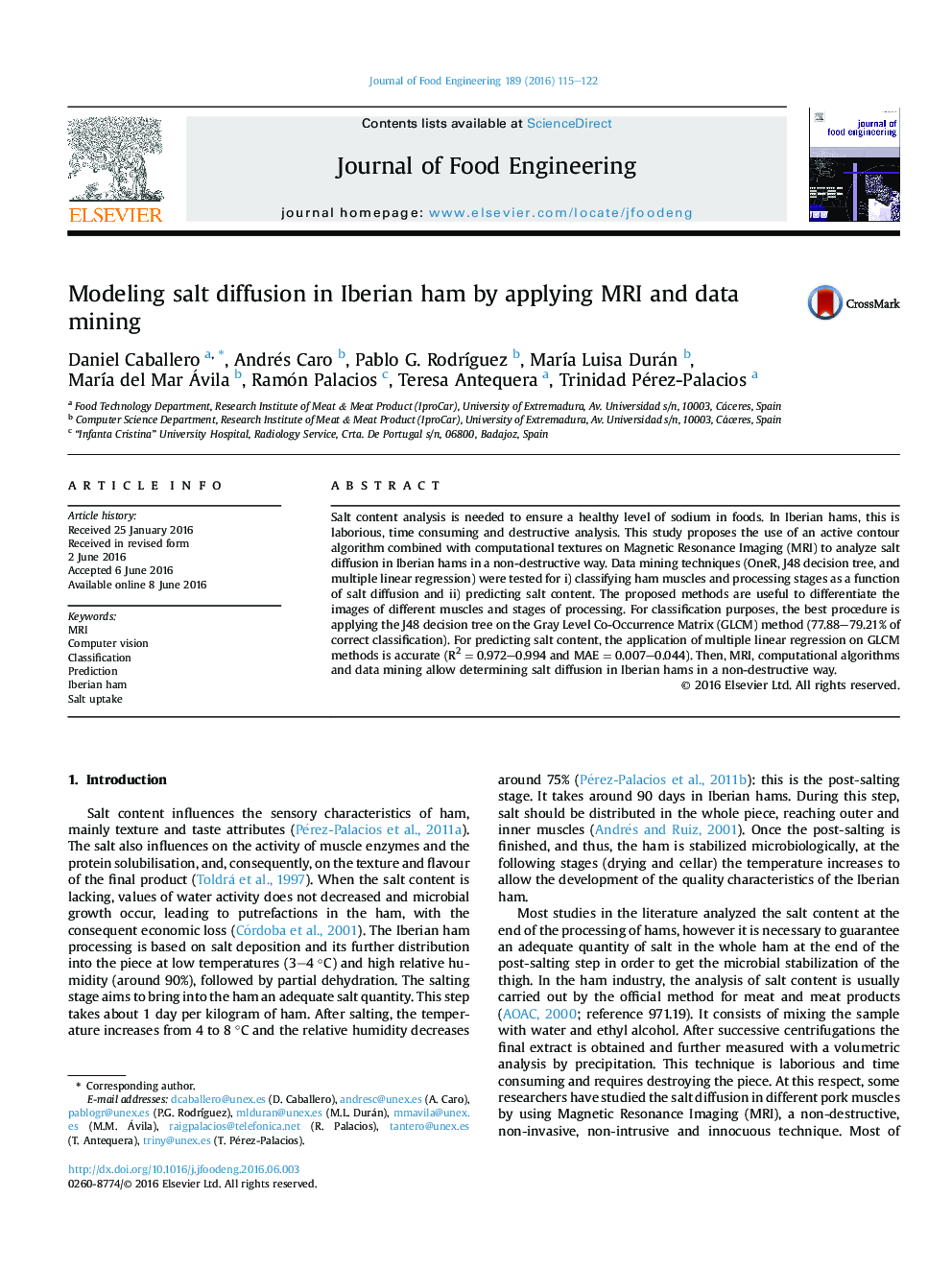| Article ID | Journal | Published Year | Pages | File Type |
|---|---|---|---|---|
| 222595 | Journal of Food Engineering | 2016 | 8 Pages |
•This work studies salt diffusion in ham by MRI, computer vision and data mining.•Data mining can be used to classify Iberian ham muscles and stages of processing.•Salt content in Iberian hams can be predicted by the application of data mining.•Analyses of salt content in hams can be carried out non-destructively by MRI.
Salt content analysis is needed to ensure a healthy level of sodium in foods. In Iberian hams, this is laborious, time consuming and destructive analysis. This study proposes the use of an active contour algorithm combined with computational textures on Magnetic Resonance Imaging (MRI) to analyze salt diffusion in Iberian hams in a non-destructive way. Data mining techniques (OneR, J48 decision tree, and multiple linear regression) were tested for i) classifying ham muscles and processing stages as a function of salt diffusion and ii) predicting salt content. The proposed methods are useful to differentiate the images of different muscles and stages of processing. For classification purposes, the best procedure is applying the J48 decision tree on the Gray Level Co-Occurrence Matrix (GLCM) method (77.88–79.21% of correct classification). For predicting salt content, the application of multiple linear regression on GLCM methods is accurate (R2 = 0.972–0.994 and MAE = 0.007–0.044). Then, MRI, computational algorithms and data mining allow determining salt diffusion in Iberian hams in a non-destructive way.
